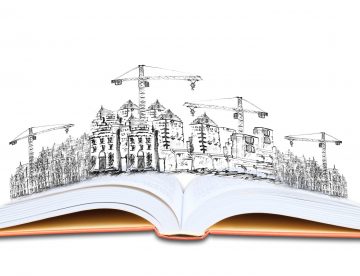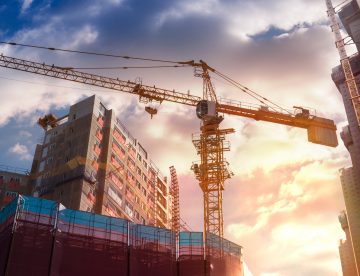
With all the political news focusing on the UK budget last week, you might have missed some amendments being made to the government’s Levelling Up Bill which will have implications for the construction industry.
Alongside measures that are supposed to help regenerate communities, speed up the delivery of new homes, improve wastewater facilities and give local people a greater say in how their neighbourhood looks, the government have presented what they’re calling BIDEN principles which should be applied to all new developments.
Intrigued as to what this means, we thought we’d find out more and use this week’s blog to explain.

There was a time when the idea of including a flat roof in a building design would have been considered risky, largely because of the kind of roofing materials used during the 1950s and 60s which proved to be not that durable and had a reputation for leaks. However, the technology has moved on so much since then and today we have flat-roofing solutions which provide exceptional waterproofing, are resistant to tear or puncture and have a much longer lifespan than their predecessors.
Perhaps the best thing about modern flat-roofing is that, providing it has been professionally installed, it should only ever require some simple routine maintenance. With the Autumn bringing leaves and debris onto our roofs, now is the time to get that maintenance done. Follow our advice in this week’s blog.

This week, the Egyptian city of Sharm el-Sheikh saw world leaders, business leaders, climate activists, civil society representatives and others arrive for COP27 – the largest annual gathering on climate action. Running for two weeks (until 18th November), this United Nations conference is seeking renewed solidarity between countries to urgently tackle the global climate emergency and deliver on the Paris Agreement for people and the planet.
Approaches that can be made by energy intensive sectors such as oil, gas, steel and cement will be discussed on the conference’s ‘Decarbonisation Day’ (11th November) so we’ll be keeping a watch on what’s said. Meanwhile, we thought we’d take this as our theme for this week’s blog and look at five ways construction companies can lower their carbon footprint.

If you’ve been working on a construction site in Britain for a while then it’s very likely you’ll have the had many experiences of working in rainy conditions.
While the odd shower isn’t so bad, persistent rain can result in some pretty unpleasant working conditions on site (and in other outdoor working environments). As well as posing a number of risks associated with workers getting cold and wet, rain can increase the chances of people falling victim to other hazards like slips, falls and accidents caused by poor visibility.
As we’ve had a few Autumnal downpours over the past few days, in this week’s blog, we’re talking about the dangers associated with working in rain and what steps can be taken to stay safe.
